Music Theory Fundamentals
Music Terminology
Learning how to play a musical instrument or even sing a song requires a basic understanding of the different terms that are fundamental to music. The following are the most important terms you need to know.
- Amplitude – This refers to the height of the sound wave. The higher the amplitude, the higher is the intensity of the sound.
- Cycle – This refers to the upward and downward movement of a soundwave. One cycle is equivalent to one upward wave (peak) and one downward wave (trough).
- Envelope – This is a property of pitch and consists of the decay, sustain, and attack.
- Ethnomusicology – A specialized branch of knowledge that aims to discover music from different ethnic regions.
- Frequency – This refers to the number of sound cycles produced in each time period, often in seconds. An example is the A-note, which has a frequency of 440 Hertz or cycles per second.
- Harmonic series – Refers to the different pitches that are produced in a tone. The harmonic series of C is given below.
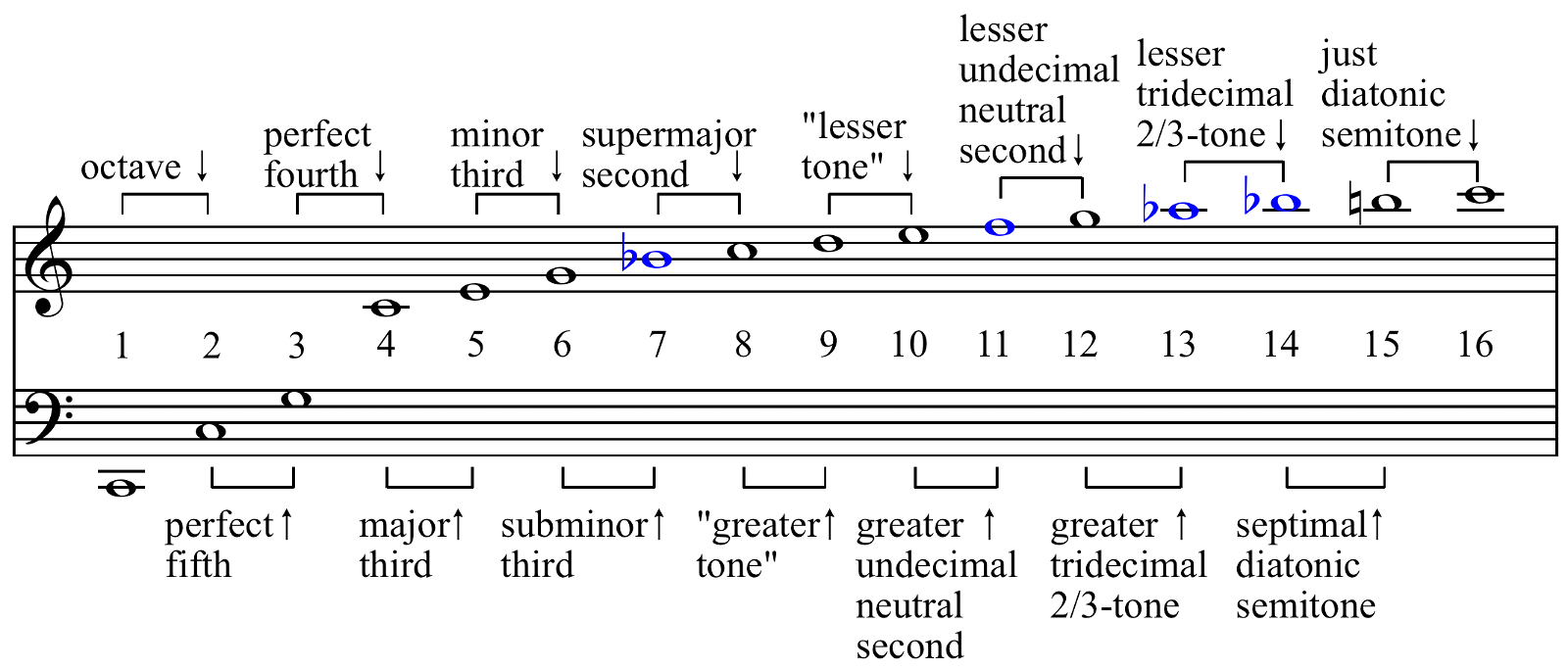
- Intensity – Defines the softness or the loudness of sound. This is affected by amplitude.
- Music – Considered by many as a form of aural or auditory art, music comes from a vibration-producing sound source. The vibrations are what create sound waves.
- Music theory – The body of knowledge that pertains to music and can include the composition and the analysis of music.
- Musicology – This branch of music theory focuses more on the historical development of any given type of music.
- Pitch – Refers to the lowness or highness of sound. Pitch is directly proportional to the rate of sound per unit measure of time. High frequency sounds have a higher pitch.
- Pure sound – Sound produced by sine waves.
- Sine wave – This is a continuous wave that denotes a very smooth periodic oscillation. Only tuning forks and electronic instruments can produce a sine wave. Musical instruments can produce different sine waves, resulting in different frequencies and pitches.
- Sound waves – These are the result of vibrations coming from a sound source. Sound waves always carry energy.

- Timbre – The tone color of a specific musical instrument. It is a function of the combination of different sine waves produced by that instrument.
Notation
Musical notes and other markings are always written on a staff. Consider it as the musician’s canvas. This is a series of 5 horizontal lines and 4 spaces in between each line.  There are instances when a staff cannot accommodate a note that is higher or lower than the ones in the staff. As such, you will see ledger lines. The clef determines what note will be on which line or space on the staff. There are three types of musical keys: G or treble clef, F or bass clef, and C clef. Notice the inside curl of the treble clef. It is on the second line, which is the G note.
There are instances when a staff cannot accommodate a note that is higher or lower than the ones in the staff. As such, you will see ledger lines. The clef determines what note will be on which line or space on the staff. There are three types of musical keys: G or treble clef, F or bass clef, and C clef. Notice the inside curl of the treble clef. It is on the second line, which is the G note.  The large head of the coma-shaped bass clef is on the 4th line, denoting the key of F.
The large head of the coma-shaped bass clef is on the 4th line, denoting the key of F. 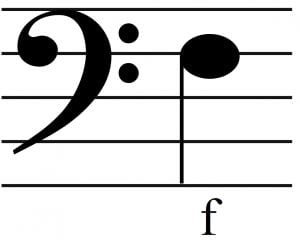 The fancy “B” shape of the C-clef has the midsection in the third line.
The fancy “B” shape of the C-clef has the midsection in the third line. 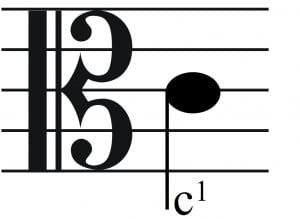 Only the C-clef is movable, depending on the pitch of the sound. It can be that of a soprano, a mezzo-soprano, an alto, a tenor, or a baritone. The tenor and the alto C-clefs are the most common. There are only 7 letters that denote the different musical notes. These follow the normal sequence of the letters in the alphabet from A to G.
Only the C-clef is movable, depending on the pitch of the sound. It can be that of a soprano, a mezzo-soprano, an alto, a tenor, or a baritone. The tenor and the alto C-clefs are the most common. There are only 7 letters that denote the different musical notes. These follow the normal sequence of the letters in the alphabet from A to G. 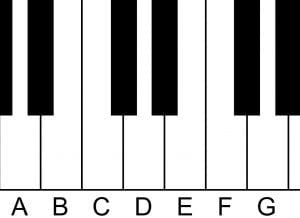 It is possible to combine two different staffs to produce a grand staff. For example, you can have a staff with a treble clef above another staff with a bass clef.
It is possible to combine two different staffs to produce a grand staff. For example, you can have a staff with a treble clef above another staff with a bass clef. 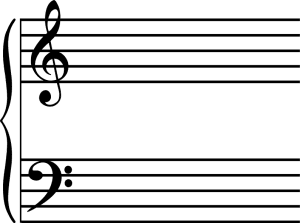 In between these two staffs is the Middle C. Let us take a look at the notes on a piano keyboard.
In between these two staffs is the Middle C. Let us take a look at the notes on a piano keyboard.  The piano keys will always have groups of 2 and 3 black tiles. The key of C will always be the first white tile before a 2-black tile group. Adjacent piano keys make up a half-step. For example, E-F. If the white keys are intersected by a black key, they call it a whole-step. Examples are D-E and G-A. It is possible to alter the note using accidentals that can include a flat, double flat, sharp, double sharp, and natural signs. Here’s an example:
The piano keys will always have groups of 2 and 3 black tiles. The key of C will always be the first white tile before a 2-black tile group. Adjacent piano keys make up a half-step. For example, E-F. If the white keys are intersected by a black key, they call it a whole-step. Examples are D-E and G-A. It is possible to alter the note using accidentals that can include a flat, double flat, sharp, double sharp, and natural signs. Here’s an example: 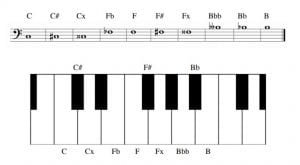 Notice the Cx, Fb, Fx, and Bbb in the figure above. These notes refer to D, E, G, and A, respectively. They are only written differently. These are what musicians call enharmonic notes. Always keep in mind that the sound we hear is the tone. If we can name the sound, then we call it the pitch. If you can read it, then it is a note.
Notice the Cx, Fb, Fx, and Bbb in the figure above. These notes refer to D, E, G, and A, respectively. They are only written differently. These are what musicians call enharmonic notes. Always keep in mind that the sound we hear is the tone. If we can name the sound, then we call it the pitch. If you can read it, then it is a note.
Rhythm
The rhythm of any music describes the placement of the different sounds over time. Beats define the rhythm of any music and can be either weak or strong. A bar line separates the measurable divisions of beats that occur in recurring patterns. For example, if the pattern is S-w-s-w, then there is a single vertical bar line between one group of “S-w-s-w” and the next group of “S-w-s-w”.  Musicians call the pattern of weak or stress and strong beats as a meter. If the pattern is strong-weak, it is called a duple. An “s-w-w” pattern is called a triple. The other meters are quadruple (4 beats) and quintuple (5 beats). Beats are often divided, depending on the time signature of the composition. A beat divides into two in simple time. There are 3 parts of a beat in compound time. As such, a “triple-compound” includes 3 beats. Each beat divides into 3.
Musicians call the pattern of weak or stress and strong beats as a meter. If the pattern is strong-weak, it is called a duple. An “s-w-w” pattern is called a triple. The other meters are quadruple (4 beats) and quintuple (5 beats). Beats are often divided, depending on the time signature of the composition. A beat divides into two in simple time. There are 3 parts of a beat in compound time. As such, a “triple-compound” includes 3 beats. Each beat divides into 3.
To determine the rhythm of a certain music, you need to know its time signature. This is often expressed as a fraction. You can identify the meter if it is simple or compound time based on the numerator of the fraction alone. If the numerator is 3 or not a multiple of 3, then it is a simple meter. If the numerator is 6, 9, or any other multiple of 3, then the meter is compound. The numerator also gives you an idea of the number of beats in each measure.
Related Lesson: Fender Play
The number of beats in a simple time measure is equivalent to the number of the numerator. If it is 3, then the number of beats is 3. The number of beats in a compound measure is equivalent to the numerator divided by 3. The numerator signifies the number of beat divisions. For example, if the numerator is 6, then the number of beats is 2 (6 ÷ 3).
As for the denominator, it reflects the unit of beat if it is in the simple measure. The denominator will indicate the number of beat divisions if the time measure is compound. However, it is important to add 3 to the value to determine the unit of beat.
Major and Minor Scales
Before we can understand major and minor scales, it is important to understand half- and whole- steps first. We will look at the piano keys for better understanding.
- A half-step consists of two adjacent white tiles.
- A whole-step consists of two white tiles and a black tile in between.
A musical scale consists of pitches or notes that are arranged in a stepwise manner within an octave. Both minor and major scales can contain 7 scale degrees or notes. An Arabic numeral identifies each scale degree. It also identifies the note’s placement within the scale. Each scale degree also has a specific solfege syllable and a name. These are as follows: 
- Do – tonic
- Re – supertonic
- Mi – median
- Fa – subdominant
- Sol – dominant
- La – submediant
- Ti – leading tone
We can now put what we have learned to determine the difference between a major and a minor scale.
- Major scale
https://youtu.be/pF4DegadNYs This is determined by the presence of half-steps in between the 3rd-4th and 7th-8th scale degrees. All other note pairs will have whole-steps between them. Scales will often have 4 groups of notes, known collectively as tetrachord. A major scale will always have 2 tetrachords. Both will have the same sequencing of half-steps and whole-steps.
- Minor scale
https://youtu.be/Q7WqKpD7w4Q If the half-steps are between the 2nd-3rd and 5th-6th scale degrees, then the minor scale is in its natural form. There will also be some changes in the solfege syllables. These include “Te” instead of “Ti, “Le instead of “La”, and “Me” instead of “Mi”. If the half-steps occur between 2nd-3rd, 5th-6th, and 7th-8th scale degrees, then it is a harmonic minor scale.
Another important distinction is the addition of a whole-step between the 6th and 7th scale degree. This changes the “Te” solfege syllable of the natural minor scale back to “Ti”. In an ascending melodic minor scale, there are half-steps between the 2nd-3rd and 7th-8th scale degrees. The arrangement turns “Le” and “Te” back into “La” and “Ti”. The descending form of melodic minor scale has half-steps located at the 2nd-3rd and 5th-6th scale degrees. The result is the replacement of La” and “Ti” with “Le” and “Te”, respectively.
Key Signatures
Accidentals are necessary elements in any given composition. However, writing them repeatedly on the staff can be daunting. As such, composers often write key signatures in the beginning section of the staff, right after the clef. These key signatures are the cluster of flats or sharps that indicate the music’s tonal center or the overall pitch of the music piece.
Writing a Key Signature
Making a key signature is straightforward. You only need to take the different accidentals in your minor and major scales and place them after the clef. Do take note that the ordering of flats and sharps never changes. These are as follows:
- Flats – B-E-A-D-G-C-F
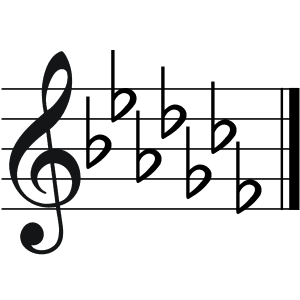
- Sharps – F-C-G-D-A-E-B
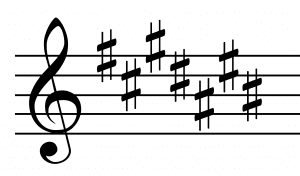
Major Key Determination
Determining the major key is also easy if you know the key signature of the piece. If the key signature is in sharps, identify the note of the last sharp. Determine the half-step of this note and you get your major key. For instance, if the last sharp is in the G# note, then its half-step is A. For flats, you need to look at the second to the last flat. This will determine the major key. Another way to do it is by determining the last flat and moving the note 4 steps down. For example, if the second to the last flat is Ab, then the major key is also Ab. Using the 4-steps down method, this will still result in an Ab if the last flat is Db.
Minor Key Determination
The determination of the minor key involves two steps. First, you need to identify the major key. Second, it is important to move the note one whole-step and one half-step down. For example, if you have 3 sharps, this is equivalent to A. moving a whole-step down puts you in the key of F. Moving the note a half-step down gives you F#. As such, the minor key of A is F#-minor. If the key is Ab, then a whole- and half- step down puts the key in F-minor. You can also determine the key signature if you know the key. The easiest way to do this is by using the circle of 5ths. Use the circle clockwise if you have sharps; counterclockwise if you have flats. 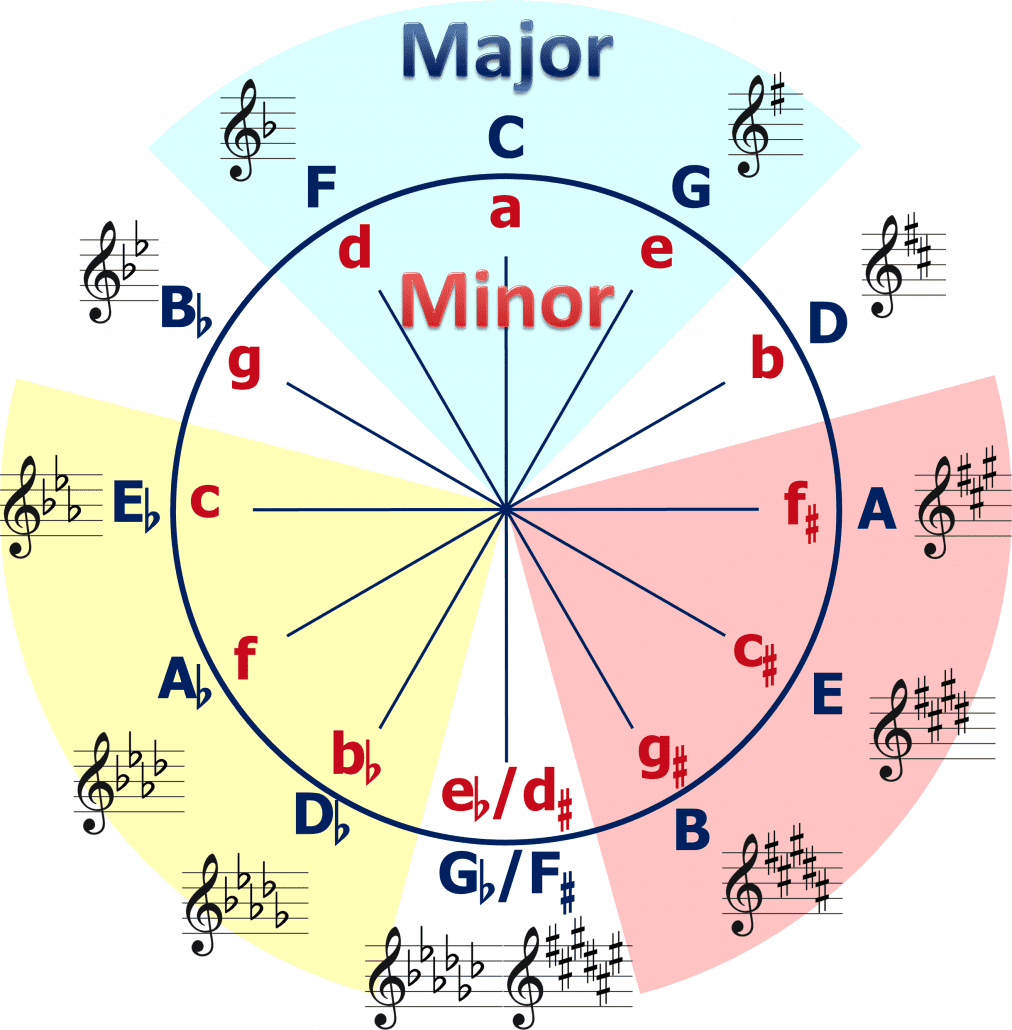
Modes and Other Scales
Modes are the most basic of scales. They don’t have accidentals, such as flats and sharps. Modes serve as the foundation for a composition’s basic tonal substance prior to the widespread use of minor and major scales. There are 7 different modes. These include the following.

- Ionian – This mode follows a W-W-H-W-W-W-H pattern and is equivalent to a major scale.
- Dorian – This medieval mode has a W-H-W-W-W-H-W pattern. It is also equivalent to a modern minor scale with 6 sharps. Two of its solfege syllables are also different: “me” and “te”.
- Phrygian – Following an H-W-W-W-H-W-W pattern, the Phrygian is like a minor scale with 2 flats. Its re, mi, la, and ti solfege syllables are also replaced with “ra”, “me”, “le”, and “te”.
- Lydian – This mode has a W-W-W-H-W-W-H whole- and half- step pattern. It is almost like a major scale with 4 sharps. Only the “fa” is replaced with “fi.
- Mixolydian – The pattern of the Mixolydian is W-W-H-W-W-H-W and is the equivalent of a modern major scale with 7 flats. “Te” also replaces the “Ti”.
- Aeolian – The Aeolian has a W-H-W-W-H-W-W pattern and mimics the natural type of the modern minor scale.
- Locrian – This mode follows an H-W-W-H-W-W-W pattern and is equivalent to a minor scale with either 2 flats or 5 flats. It is the mode that replaces most of the modern solfege syllables with “ra”, “me”, “se”, “le”, and “te”.
These medieval modes have their origins from the Church Mode; although the Aeolian and Ionian modes were only added sometime in the 16th century by Glareanus. In addition to modes, there are also other scales that you should know. These are as follows.
- Pentatonic
This is a scale that has 5 notes per scale. If there are no semi-tones, it is called diatonic. Musicians call it semitonal if the 2nd and 5th or 2nd and 6th scale degrees of the diatonic are removed.
- Whole-tone
This scale consists of 6 whole-tone notes only.
- Octatonic
This involves the alteration of whole-steps and half-steps.
- Mystic
If you use the notes of the mystic chords of Scriabin, then you have a mystic scale.
Intervals
One important notation in a musical composition is the interval. This refers to the distance between pitches or notes.  Music intervals can be determined according to their size and quality. The size is a measure of the number of notes within a given scale. It is important to determine the beginning note and the ending note. Determining the quality of the intervals can be a bit tricky. You can classify these intervals as follows.
Music intervals can be determined according to their size and quality. The size is a measure of the number of notes within a given scale. It is important to determine the beginning note and the ending note. Determining the quality of the intervals can be a bit tricky. You can classify these intervals as follows.
- Perfect
You can have a perfect interval if the interval size is equivalent to 2, 3, 6, or 7. Included here are the multiples of these numbers. For an interval to be perfect, both of its bottom and top notes should be equivalent to the major key of the top and bottom notes, respectively.
- Major
If the bottom note’s major key is in the top note, then the interval is major.
- Minor
This is smaller by half a step than a major interval.
- Diminished
This is smaller by half a step than a perfect or a minor interval.
- Augmented
The opposite of diminished interval, wherein it is larger by half a step than a perfect or a major interval. There are also compound intervals, which are typically larger than the conventional octave. As such, any note beyond the 8-note count of an octave is already a compound. For example, having a 9th note will produce a compound 2nd. However, this naming convention only works for the 9th to the 12th notes. Any note beyond the 12th will take on the simple interval name. It is also possible to invert intervals. This is quite easy.
You only need to reverse the notes. The top note will become a bottom note, and vice versa. Do take note that inverting the intervals will also change its size and quality. For example, inverting 1 to 8 will produce an interval size of 9. Inverting a major interval will produce a minor interval or inverting a diminished interval will lead to an augmented interval. Music intervals can have a bearing on the overall quality of the sound. Consonant intervals always produce a sound that is very pleasant to hear. Dissonant intervals may sound harsh.
Triads
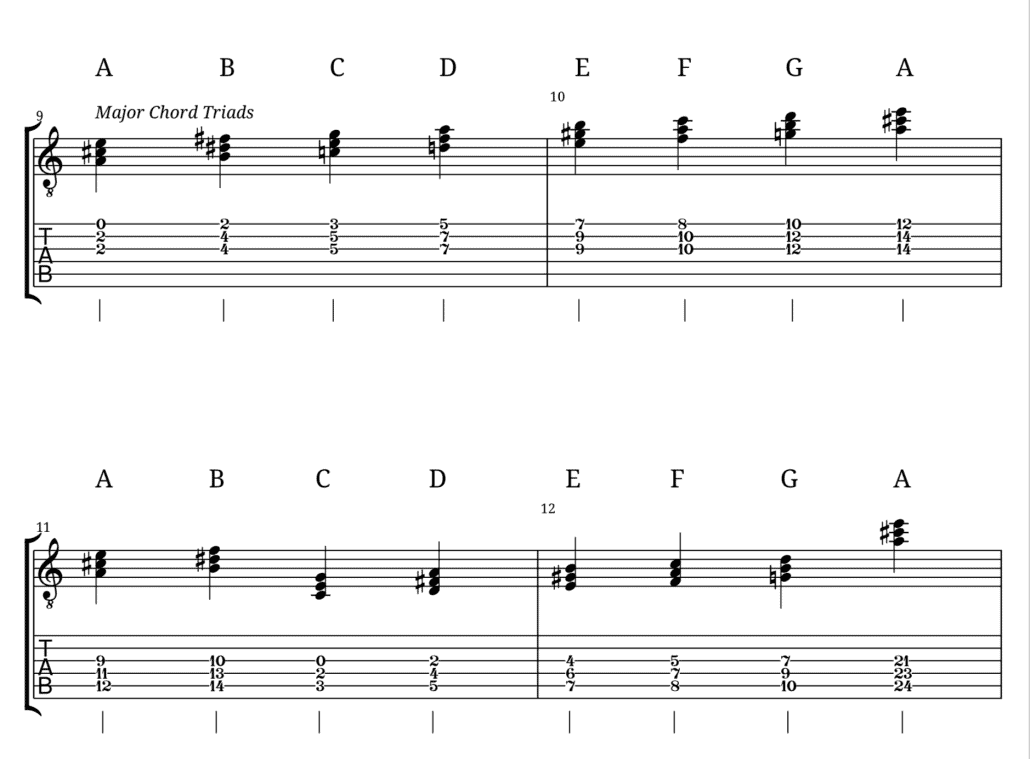 Triads are a type of chords that consists of 3 notes. They can come in 4 types, according to their quality. These qualities include major, minor, augmented, and diminished. The minor triad often has a flat in the middle note. The augmented and diminished types of triad have a sharp. The sharp is located on the lower note of the diminished triad, while the augmented triad will have the sharp to the left of the top note.
Triads are a type of chords that consists of 3 notes. They can come in 4 types, according to their quality. These qualities include major, minor, augmented, and diminished. The minor triad often has a flat in the middle note. The augmented and diminished types of triad have a sharp. The sharp is located on the lower note of the diminished triad, while the augmented triad will have the sharp to the left of the top note. 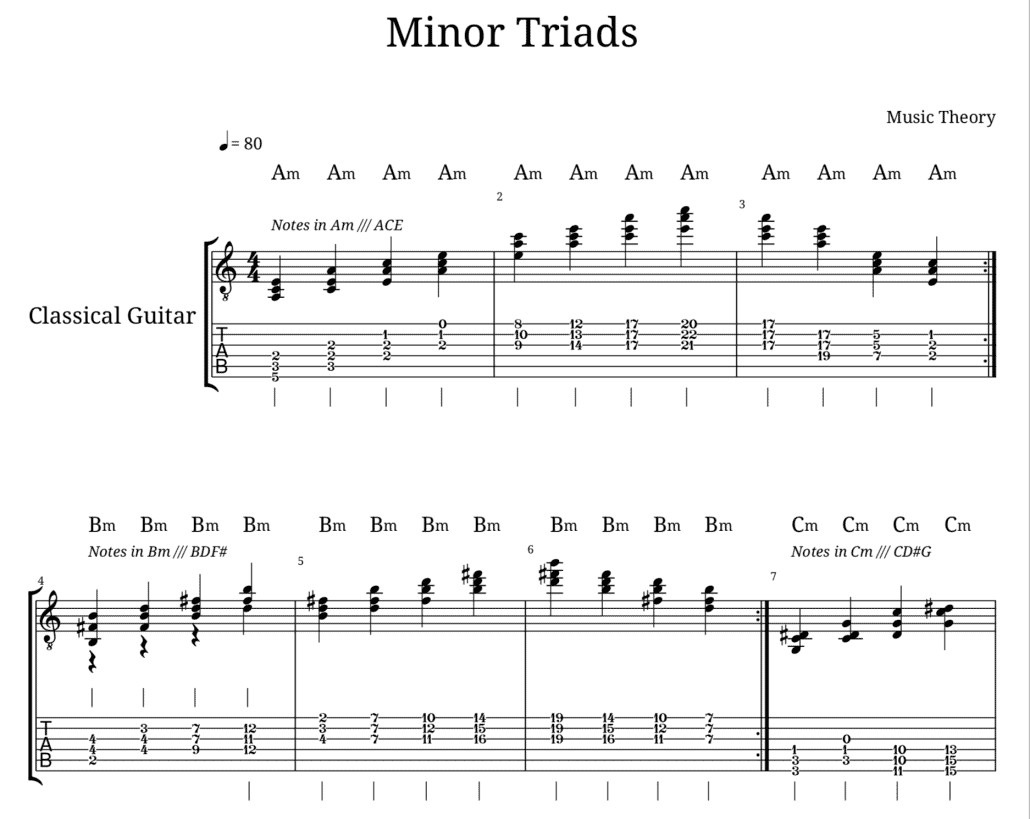 The bottom note in a triad defines the bass of the chord. This also defines the root position of the triad. The root position is often notated in the position. The reason for this is that there is always a 3rd and a 5th interval above the root. You get an inverted triad if the chord’s root is not the bass or the bottom note. There are two types of triad inversions. The first one is the first inversion.
The bottom note in a triad defines the bass of the chord. This also defines the root position of the triad. The root position is often notated in the position. The reason for this is that there is always a 3rd and a 5th interval above the root. You get an inverted triad if the chord’s root is not the bass or the bottom note. There are two types of triad inversions. The first one is the first inversion.
The position of the middle and top notes will be on the 3rd and 6th intervals, respectively, above the chord’s bass. If the bass also happens to be the 5th of the chord, the triad is known as a second inversion triad. It is possible to create a triad on each note in a musical scale. The different triads will exhibit various qualities, depending on the type of musical scale used. Since triads are important types of chords, it is important to understand chord designations. There are two sets of numbers that will help you understand the designation of a particular chord.
- Roman Numerals
These numbers denote the scale degree of the chord’s root. Roman numerals in the uppercase indicate a major scale. A lowercase Roman numeral signifies a minor scale. Augmented scales will have an uppercase Roman numeral with a plus sign notation. The notation for a diminished scale is “o” and the Roman numeral is always in lowercase.
- Arabic Numerals
Numbers written in the Arabic form indicate the chord’s position or its degree of inversion. The root position will always have the Arabic number 5/3. A chord in the first inversion will have 6/3 , while the second inversion will have 6/4.
Seventh Chords
We already know that a triad consists of three notes for a chord. However, there are instances when musicians want to add another note above the chord’s 5th note. Such an addition is the 7th chord. It derives its name from the number of intervals relative to the bottom note or the bass of the chord. Like a triad, 7th chords also come in different qualities. This is dependent on the existing quality of the triad and the seventh note. The combination can result in the following seventh chord qualities.
- Major triad and 7th note = major 7th chord
- Minor triad and minor 7th note = minor 7th chord
- Major triad and minor 7th note = dominant 7th chord
- Diminished triad and 7th note = fully diminished 7th chord
- Diminished triad and minor 7th note = half-diminished 7th chord
- Augmented triad and major 7th note = augmented 7th chord
- Minor triad and major 7th note = minor-major 7th chord
The most common types of 7th chord are the dominant, fully-diminished, and half-diminished, in that order.  Seventh chords can also be inverted. You only need to check if the bass note is not the chord’s root. Because of the addition of a fourth note above the triad, you can expect the number of inversions to increase by one. A 7th chord in the root position is always denoted by the number “7” below the staff, in line with the chord.
Seventh chords can also be inverted. You only need to check if the bass note is not the chord’s root. Because of the addition of a fourth note above the triad, you can expect the number of inversions to increase by one. A 7th chord in the root position is always denoted by the number “7” below the staff, in line with the chord.
This indicates the presence of a 3rd, 5th, and 7th interval above the bottom note. The first inversion of a 7th chord comes with a 6/5 designation. This occurs because the bass contains the chord’s third. The 3rd, 5th, and 6th intervals are also present. There is also the assumption that there exists a note that is a third above the bottom note.
The second inversion has a designation of 4/3, wherein the bass note is in the chord’s fifth. The 7th chords all contain third, fourth, and sixth intervals. The third inversion puts the chord’s seventh in the bottom note or pitch. The intervals present in this type of 7th chord inversion include second, fourth, and sixth.